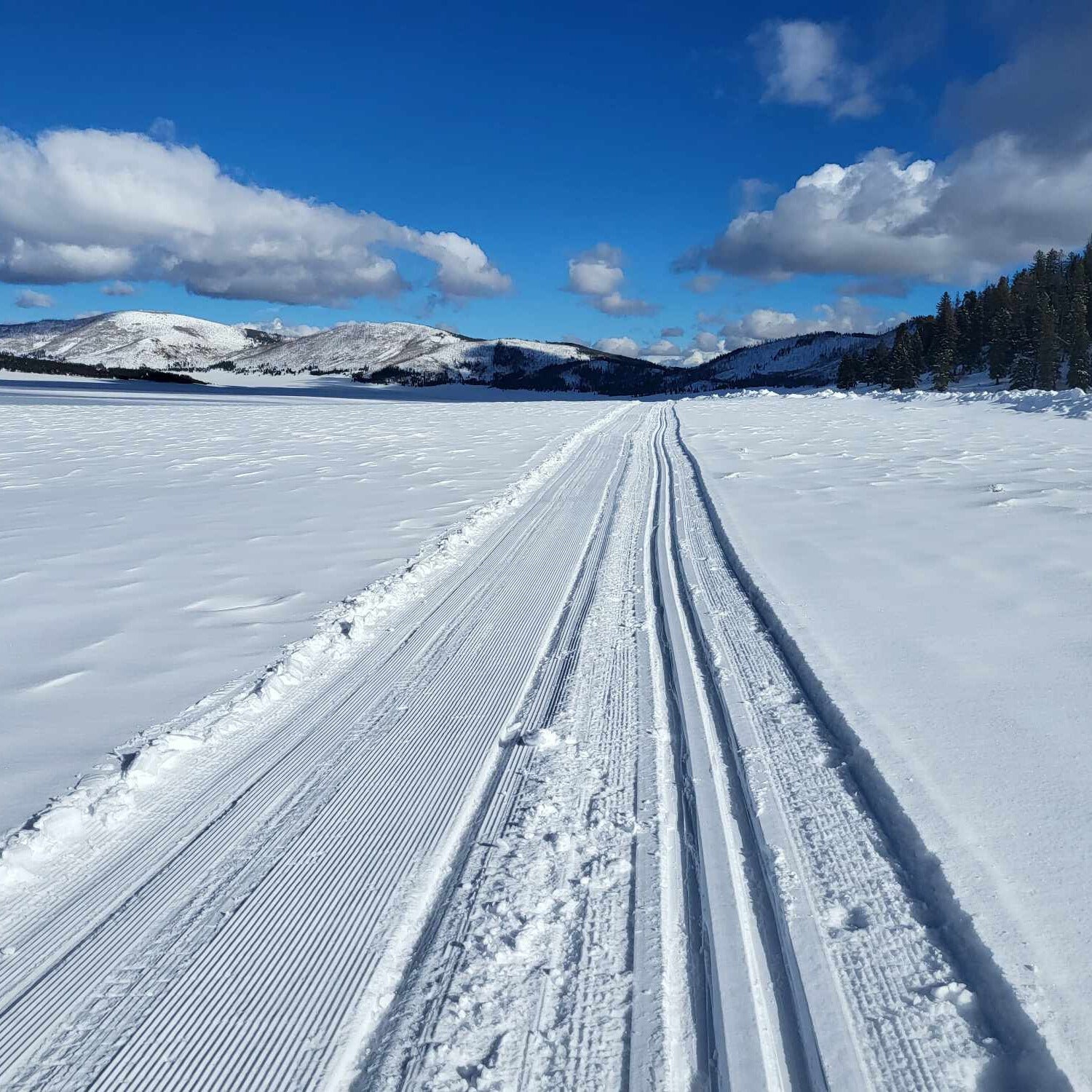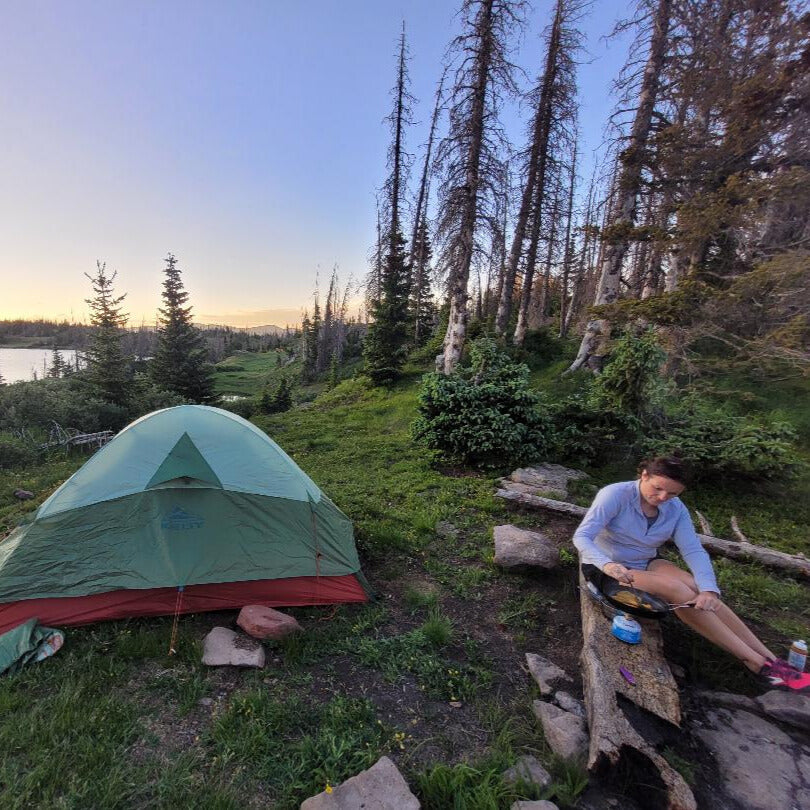Your Cart is Empty
accepting gear drop offs Mon-Sat 10am-5pm. No Consignment acceptance on Sundays.
accepting gear drop offs Mon-Sat 10am-5pm. No Consignment acceptance on Sundays.
When you’re in the backcountry, it’s generally a good idea to avoid drinking any surface water (from lakes, streams, etc.) because unlike treated tap water, it might contain pathogens and microorganisms that could make you sick. Although the likelihood of actually getting sick from drinking untreated water here in Southwest Colorado is extremely low, the consequences (violent illness for many days or weeks) are so high that you should always play it safe and treat your water.
There are several ways to make water safe to drink. In broad terms, there are two water treatment strategies: killing the microorganisms in the water (boiling or chemical treatment) or physically removing them from the water (filtration). Each strategy has pros and cons, and within each category there are many methods and technologies that accomplish the goal of killing or removing the nasty stuff in your water.
|
What happens to pathogens? |
Treatment Method |
Examples |
|
Killed |
Boiling |
n/a |
|
Chemical Treatment |
Iodine (liquid or tablets, e.x. Potable Aqua) |
|
|
Chlorine (Bleach) |
||
|
Chlorine Dioxide (liquid or tablets, e.x. Aqua Mira) |
||
|
Removed |
Filtration |
Pump filter (e.x. Katadyn Hiker Pro) |
|
Squeeze filter (e.x. Katadyn BeFree) |
The chart below, from the CDC, provides a great overview of the pros and cons of each water treatment method. The nuances are important because there are a wide range of pathogens that can occur in surface water, and most treatment methods are most effective against a specific category of pathogen. Filtration, for example, is very effective against protozoa and bacteria, but themajority of commercially-available filters cannot remove viruses from water* (since viruses are small enough to fit through most consumer-grade filters). Iodine, on the other hand, kills both viruses and bacteria but cannot kill some protozoa (e.x. cryptosporidium) that are protected by a cyst (a kind of hard shell that iodine cannot penetrate).

Boiling is the only treatment method that is 100% effective against all waterborne pathogens — any other method will be a compromise. Luckily, here in the wild landscapes of North America we don’t have to worry too much about waterborne viral illness, so filtration is just fine. And cryptosporidium is much less of a concern than in some other parts of the world. If you’re super concerned about waterborne illness, or you’re traveling abroad, the best option is to filter your water and then treat it chemically. Or better yet, just boil all of your drinking water.
|
Common Water Filters |
|
|
Pump Style |
Squeeze Style |
|
Katadyn Hiker Pro - $85 (‘Hiker’ is $75)
|
MSR TrailShot - $50
|
|
MSR MiniWorks EX - $90
|
Katadyn BeFree 1L - $45
|
Why are some filters so expensive?
Most filters are between $30 and $150, and offer similar features. But some filters cost much, much more, and are heavier and bulkier as well. Why pay a lot more for a less portable water filter? A good example is the MSR Guardian, which retails for $350. Let’s dive into what makes it different, which will also help us understand the limitations of ‘standard’ water filters.
This filter stands out in a few unique ways. First, it cannot be damaged by freezing, unlike every other filter on the market. With most water filters it is critical to avoid freezing them because the water trapped within the filter will expand and tear through the filter membranes when it freezes. The Guardian is designed to avoid this type of damage. No more spending the night with your filter in your sleeping bag.
Second, the continuous self-backflushing system ensures that the filter pores remain free of sediment, allowing the filter to be used in very turbid (murky) water with little maintenance. Most filters will clog up very quickly if used in turbid water, and require backflushing to maintain flow. Performing a backflush only takes a few minutes, but can require extra parts or tools (for some filters) and can be extremely tedious when filtering muddy water that might require a full backflush after each liter filtered. The Guardian is the only filter on the market that can be used in muddy water without first settling out particulates or constantly backflushing.
Third, the 0.02 micron pore size makes it one of the only packable water filters that will clean water of viruses. For comparison, most filters have a pore size of 0.1 to 0.2 microns, including the models we carry from Katadyn and the competitively-priced offerings from MSR. It also works fast: the output of 2L/min is incredibly fast for a filter with these features.
Downsides to all these great features are the weight and bulk (almost twice as big/heavy as the Katadyn Hiker Pro) and of course the price. It’s undoubtedly the highest performing filter on the market, and uses several innovations to overcome the limitations of other filters. But this all comes at a cost. This filter is designed for international travel, where muddy water might be the only option, safety from viruses is critical, and groups might need to filter large volumes of water at a time. These design parameters also make it great for self-supporting kayakers on river trips like the Grand Canyon where the only water available is extremely silty.
For the majority of users in North America, the ‘cheaper’ filters will be just fine. But keep the limitations of these filters in mind: they shouldn’t be allowed to freeze, you’ll need to backflush them at least in between trips if not in the field (depends on the model, as a rule of thumb a filter should be backflushed when the flow has slowed enough to be noticeable), and you should try to choose clear water sources or allow sediment to settle before filtration.
|
(More) Common Water Filters |
|
|
Gravity Style |
Squeeze Style |
|
Platypus Gravity Works - $110 |
Sawyer Squeeze - $30 Sawyer Squeeze Mini - $20 |
Retail Water Filters
We have an excellent selection of new water filters from Katadyn.
|
Katadyn BeFree 1L $44.95 0.1 micron hollow fiber filter cartridge 2L/min output 2 oz
|
Katadyn BeFree 3L $59.95 Same filter cartridge as the BeFree 1L 4 oz 3L version can be easily set up as a gravity filter
|
||
|
Katadyn BeFree Replacement Cartridge $24.95
Fits any BeFree bottle (and many other soft bottles from HydraPak) |
The BeFree system is an awesome take on the backcountry water filter. Lightweight, compact, easy and quick to use, easy to service, and with a long lifetime: the BeFree system checks all of the boxes. Compared to Sawyer Squeeze filter: Faster flow rate, easier maintenance, lighter weight. |
||
We also carry a UV treatment option: theSteriPen. UV systems don’t work in cloudy or murky water, but for high alpine backpacking or casual hiking they’re a great easy-to-use option. We carry the top-endAdventurer Optimodel, whichretails for $100.
|
(Even More) Common Water Filters |
|
|
UV Style(technically not a ‘filter’) |
Unique Designs |
|
Crazy Cap - $70 |
LifeStraw - $20 |
|
Squeeze Style |
Grayl Ultralight - $70 |
|
AquaMira Frontier Max - $50 The only commercially available filter under $150 that removes viruses |
|
Chemical Water Treatment
Chemical water treatment is a great choice for ultralight adventures or as a backup treatment method in case your filter breaks.
There are a variety of chemical treatment options, but most use one of three active ingredients: iodine, chlorine dioxide, or chlorine. Iodine can be found in tablet or liquid form, and is a popular choice due to low price and easy availability. It is also a very effective first aid antiseptic, and therefore worth carrying for longer trips or expeditions. There are several drawbacks to treating drinking water with iodine, however: it is not effective against protozoa like cryptosporidium, some people are allergic (if you have a shellfish allergy, you will also be allergic to iodine), and it has a unique strong taste.
Chlorine, typically in the form of Bleach, is most often used to treat water in emergency or disaster relief situations. Chlorine also will not kill protozoa, but has a much more palatable taste than iodine, and is not associated with any common allergies. However it can cause intense intestinal distress if overused, and correct dosing guidelines vary between sources. For these reasons it isn’t commonly used in the backcountry setting.
Chlorine dioxide avoids many of the drawbacks of iodine and chlorine: it doesn’t leave any aftertaste and it kills protozoa. However it isn’t chemically stable for long periods of time, so chlorine dioxide water treatments typically come in two parts that need to be mixed, the most popular example being the two-part Aqua Mira system. The downsides to chlorine dioxide water treatment are the cost (significantly more than iodine) and the extra complexity and waiting time required by the two-part mixture. Chlorine dioxide also comes in a tablet form that eliminates the complexity of mixing two liquid solutions.
Here at DOE we sell some simple iodine-based (Tetraglycine Hydroperiodide) water treatment tablets from Potable Aqua. A bottle of 50 tablets costs $9.99. We also sell a package with “PA+Plus”, a pH balancer that reduces the iodine taste and color, for $12.99.
With any chemical water treatment, it is important to wait at least 30 minutes before drinking your treated water. Every treatment method has a different waiting time; check the manufacturers recommendations on the packaging.
A common myth surrounding chemical water treatment is that you need to ‘burp’ your water bottle after treatment if you filled it directly from the source. This involves flipping your bottle over, opening the cap loosely, and allowing some treated water to trickle through. The logic behind this is that if you have scooped water directly into your bottle from a stream or pond, a small amount of untreated water will remain on the threads of the bottle. Allowing some treated water to drip through the threads displaces the dirty water so you don’t ingest any while you sip. However when you consider the volume of dirty water you could ingest from the threads of a water bottle, relative to the pathogen ‘load’ required to get you sick, it really doesn’t follow that you could possibly get sick from the tiny volume of dirty water trapped on the threads of your water bottle. With all that in mind, ‘burping’ your bottle after treatment is a totally unnecessary step.

Thanksgiving is almost here–and skiing this early is always a gamble. Here are some non-skiing warm(er) weather destination ideas for the long break.

Just a couple hours from Durango, Valles Caldera is a great cross-country skiing destination, with surprisingly good snow and very few visitors.
Valles Caldera National Preserve is a popular hiking destination in the summer and a surprisingly great skiing destination in the winter.

When spending one night (or many) in the backcountry, a warm dinner at night and hot beverage in the morning can make the difference. That invariably involves using a stove of some sort–but which one?
Stove technology has been around for decades, but new tech is making them lighter, more efficient, and more dependable than ever before. Here’s a rundown of the different kinds of backpacking stoves: